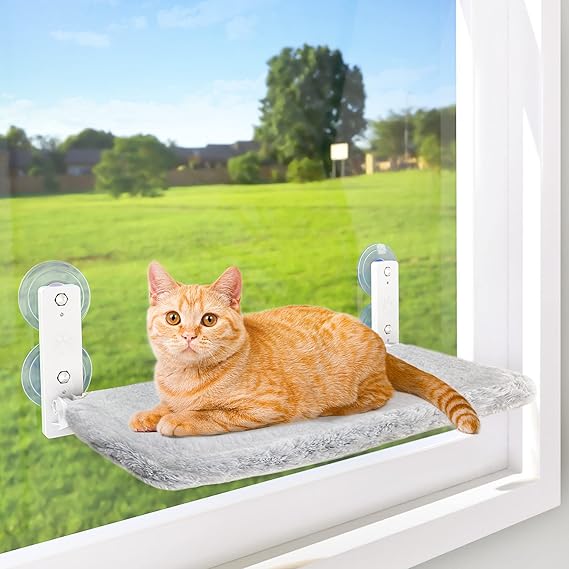Cats are known for their independence and their sometimes rebellious behavior. Whether it’s scratching the furniture, jumping on counters, or making a mess with your plants, getting a cat to stop doing something undesirable can be challenging. However, with patience, understanding, and the right approach, you can effectively communicate with your feline friend and modify their behavior. Here are some strategies to help you tell your cat not to do something.
Other Topics You Might Like
Helpful Products You Might Like

AMOSIJOY Cordless Cat Hammock

Vceoa Carrier for Pets

Kitty City Large Tunnel Bed For Cat
"(Paid Links)" 
Understand Your Cat’s Behavior
It is important to understand why your cat is behaving a certain way. Cats scratch furniture to mark their territory or to sharpen their claws, and they might jump on counters out of curiosity or a desire for elevated sitting points. Understanding the reason behind the cat's peculiar behavior can help you address it more effectively.

Provide Alternatives
Cats get involve in behaviors that are natural to them, therefore, provide them with appropriate alternatives. Invest in a scratching post or cat tree if your cat is scratching the furniture. Place it near the furniture they are targeting, and encourage them to use it by rubbing it with catnip or using toys. If your cat is jumping on counters, create elevated spaces like cat shelves or perches where they can satisfy their climbing instincts.
Use Positive Reinforcement

Positive reinforcement is a powerful tool for developing your cat's behavior. When your cat uses the scratching post instead of the furniture or plays with its toys instead of creating a mess, reward it with treats, praise, or extra playtime. This reinforces the behavior you want to see and helps your cat associate positive experiences with the desired actions.
Redirect Attention
If you catch your cat doing something you don’t want them to do, gently redirect their attention to an acceptable behavior. For example, if your cat is climbing on the kitchen counter, distract them with a toy or treat and guide them to their designated climbing area or scratching post.
Use Deterrents
Deterrents can be effective in discouraging unwanted behavior. There are various types of deterrents available, such as.
Double-sided tape
Cats dislike the sticky texture, so placing double-sided tape on surfaces they’re not allowed on can help deter them.
Citrus scents
Many cats dislike citrus scents. Using citrus-scented sprays or placing peels on surfaces can help keep them away.
Motion-activated devices
Some devices emit a burst of air or a sound when they detect movement, which can startle your cat and discourage them from approaching the area.
Consistency is Key
It is important to be consistent when training your cat. Ensure that everyone in your home follows the same rules. If you allow certain behaviors but scold your cat at other times, it can confuse them and make it harder modify their behavior.
Avoid Punishment
Do not punish your cat. Cats do not respond well to punishment and it can ruin the bond between you and your pet. Focus on positive reinforcement and provide alternatives to undesirable behaviors.

Ensure Environmental Enrichment
A bored or stressed cat may engage in undesirable behaviors. Ensure your cat’s environment is enriched with toys, climbing structures, and opportunities for mental and physical stimulation. Engaging your cat in toys like puzzle feeders can keep your fur baby busy and less likely to engage in destructive behavior.
Consult a Veterinarian or Behaviorist

If your cat’s behavior is particularly troublesome, consult a veterinarian or a feline behaviorist. They can find the underlying health issues or behavioral problems and offer tailored advice for your situation.
Conclusion
Teaching your cat not to do something requires consistency and patience. You can effectively guide your cat's behavior by providing alternatives, using positive reinforcement, and avoiding punishment. Remember your cat’s well-being in mind and create a soothing environment that meets their needs. With time and effort, you can address unwanted behaviors and enjoy a harmonious relationship with your feline friend.
